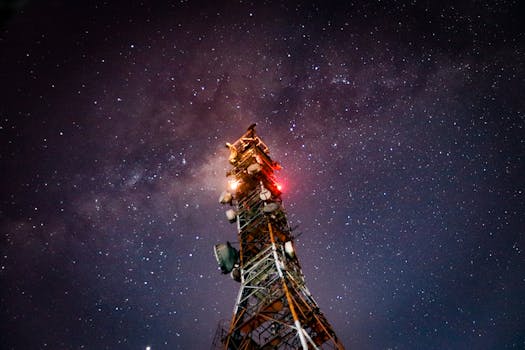
Starlink is a satellite constellation developed by SpaceX, aiming to provide global broadband connectivity. With its advanced technology and vast coverage, Starlink is revolutionizing the way we access the internet. The Focus Keyword Starlink is a crucial aspect of this innovative project, which has been making waves in the tech industry since its inception. As of now, Starlink has launched over 3,000 satellites into orbit, with plans to launch thousands more in the coming years.
The concept of Starlink was first introduced by Elon Musk, the founder of SpaceX, in 2015. Musk envisioned a network of satellites that could provide high-speed internet connectivity to remote and underserved areas around the world. The project has been in development ever since, with a team of engineers and technicians working tirelessly to bring the vision to life. One of the key features of Starlink is its use of low-Earth orbit (LEO) satellites, which are designed to orbit the Earth at an altitude of around 550 kilometers. This allows for faster data transfer rates and lower latency compared to traditional geostationary satellites.
How Starlink Works
So, how does Starlink work? The system consists of a network of satellites that are connected to a series of ground stations. These ground stations are responsible for transmitting and receiving data to and from the satellites, which are then relayed to the user’s device. The user’s device, such as a laptop or smartphone, is equipped with a small antenna that communicates with the satellites. The signal is then transmitted to the ground station, which forwards it to its final destination on the internet. Starlink uses a phased array antenna, which allows it to steer the beam electronically, providing a more efficient and reliable connection.
The benefits of Starlink are numerous. For one, it provides high-speed internet connectivity to areas that are currently underserved or unserved by traditional broadband providers. This includes rural communities, remote villages, and even entire countries that lack access to reliable internet. Starlink also has the potential to provide backup connectivity during natural disasters or outages, ensuring that critical communications remain online. Furthermore, the system is designed to be highly secure, with built-in encryption and redundancy to prevent data breaches and downtime.
Advantages and Challenges
Despite the many advantages of Starlink, there are also several challenges that the system faces. One of the main concerns is the issue of space debris. With thousands of satellites in orbit, there is a risk of collisions and the creation of more debris, which could potentially harm other satellites or even the International Space Station. Another challenge is the cost of launching and maintaining such a large network of satellites. SpaceX has already invested billions of dollars in the project, and it is likely that the cost will continue to rise as more satellites are launched.
However, the potential benefits of Starlink far outweigh the challenges. The system has the potential to provide internet connectivity to millions of people around the world, bridging the digital divide and promoting economic growth and development. It could also provide a new platform for remote education, healthcare, and other critical services. As the world becomes increasingly dependent on the internet, Starlink is poised to play a vital role in ensuring that everyone has access to this essential resource.
Conclusion and Future Developments
In conclusion, Starlink is a revolutionary satellite constellation that is set to change the face of internet connectivity. With its advanced technology, vast coverage, and potential to provide high-speed internet to remote and underserved areas, Starlink is an exciting development in the tech industry. As the project continues to evolve, we can expect to see new innovations and improvements that will further enhance the system’s capabilities. Whether you are a tech enthusiast, a business owner, or simply someone who relies on the internet for daily life, Starlink is definitely worth keeping an eye on in the coming years.
As for future developments, SpaceX has announced plans to launch a new generation of satellites, known as Starlink Gen2, which will provide even faster speeds and lower latency. The company is also working on a new user terminal, which will be smaller, more efficient, and easier to use. With these advancements, Starlink is poised to become an even more powerful tool for bridging the digital divide and promoting global connectivity.



